 Over the past 30 years obesity among children has increased. One way to help youth make healthy food choices is by creating healthy eating choices and habits at home, starting with family meals. When parents value family dinners, children are likely to view family dinners as important. Family meals can provide important examples to show children what foods are good to eat and how much of the good foods they should eat. This 5-page fact sheet was written by Varnessa McCray, Victor W. Harris, and Martie Gillen, and published by the UF Department of Family Youth and Community Sciences, April 2013.
Over the past 30 years obesity among children has increased. One way to help youth make healthy food choices is by creating healthy eating choices and habits at home, starting with family meals. When parents value family dinners, children are likely to view family dinners as important. Family meals can provide important examples to show children what foods are good to eat and how much of the good foods they should eat. This 5-page fact sheet was written by Varnessa McCray, Victor W. Harris, and Martie Gillen, and published by the UF Department of Family Youth and Community Sciences, April 2013.
http://edis.ifas.ufl.edu/fy1362
Author: dihagan
Florida-Friendly Plants for Stormwater Pond Shorelines (ENH1215/EP476)
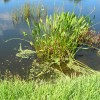 Selecting aquatic and shoreline plants for stormwater ponds is more challenging than selecting plants for a typical landscape. Site conditions can vary greatly and are more difficult to control. For example, water depth sometimes fluctuates widely, creating wet and dry conditions. Water quality varies with rainfall and fertilizer inputs. Steep slopes can make plant establishment and retention difficult. The concept of using the right plant in the right place is particularly important in the shoreline environment because the planting area includes a dry slope and a littoral shelf with shallow and deep water areas. This 4-page fact sheet recommends plants that were selected based on these three questions: 1) What environmental conditions does the plant need to grow? 2) How do you want the plant to function? 3) What do you want the plant to look like? Written by Gail Hansen and Shangchun Hu, and published by the UF Department of Environmental Horticulture, May 2013.
Selecting aquatic and shoreline plants for stormwater ponds is more challenging than selecting plants for a typical landscape. Site conditions can vary greatly and are more difficult to control. For example, water depth sometimes fluctuates widely, creating wet and dry conditions. Water quality varies with rainfall and fertilizer inputs. Steep slopes can make plant establishment and retention difficult. The concept of using the right plant in the right place is particularly important in the shoreline environment because the planting area includes a dry slope and a littoral shelf with shallow and deep water areas. This 4-page fact sheet recommends plants that were selected based on these three questions: 1) What environmental conditions does the plant need to grow? 2) How do you want the plant to function? 3) What do you want the plant to look like? Written by Gail Hansen and Shangchun Hu, and published by the UF Department of Environmental Horticulture, May 2013.
http://edis.ifas.ufl.edu/ep476
Beans, Peas, and Lentils: Health Benefits (FSHN1306/FS229)
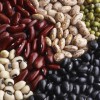 Bean, peas, and lentils are known collectively as legumes or pulses. Beans are great sources of many nutrients, including protein, fiber, and potassium. They can be placed either in the vegetable group or the protein group of MyPlate. If you have consumed enough protein choices, then you can count them in the vegetable group, and vice versa. This 2-page fact sheet was written by Lakshmi Mahan, Lauren Foster, and Wendy J. Dahl, and published by the UF Department of Food Science and Human Nutrition, May 2013.
Bean, peas, and lentils are known collectively as legumes or pulses. Beans are great sources of many nutrients, including protein, fiber, and potassium. They can be placed either in the vegetable group or the protein group of MyPlate. If you have consumed enough protein choices, then you can count them in the vegetable group, and vice versa. This 2-page fact sheet was written by Lakshmi Mahan, Lauren Foster, and Wendy J. Dahl, and published by the UF Department of Food Science and Human Nutrition, May 2013.
http://edis.ifas.ufl.edu/fs229
Field Production of Palms (ENH1210/EP471)
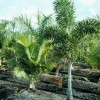 Field production is the most practical means of producing large palm specimens, and it has several advantages over container production. Yield per acre can be maximized compared to many other woody ornamentals because of the columnar growth habit of most palms and their ability to survive transplanting with a minimal root ball. When dug and tied properly, many more palms can be loaded into a standard shipping container than could similarly sized trees. Palms also offer great versatility in the method of field harvesting.This 7-page fact sheet was written by Timothy K. Broschat, Alan W. Meerow, and Jack Miller, and published by the UF Department of Environmental Horticulture, April 2013.
Field production is the most practical means of producing large palm specimens, and it has several advantages over container production. Yield per acre can be maximized compared to many other woody ornamentals because of the columnar growth habit of most palms and their ability to survive transplanting with a minimal root ball. When dug and tied properly, many more palms can be loaded into a standard shipping container than could similarly sized trees. Palms also offer great versatility in the method of field harvesting.This 7-page fact sheet was written by Timothy K. Broschat, Alan W. Meerow, and Jack Miller, and published by the UF Department of Environmental Horticulture, April 2013.
http://edis.ifas.ufl.edu/ep471
Comparing Waterbeds and Sand Beds for Cows: A Study at the UF/IFAS Dairy Unit (VM194)
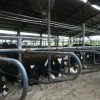 One important aspect of a cow’s comfort is the type of bedding used. Waterbeds for cows have recently gained popularity because of advertisements, news reports in outlets such as CNN. The UF/IFAS Dairy Unit (DU) provides a good opportunity to compare sand beds and waterbeds at optimal conditions. The dairy has waterbeds installed in one half of the barns and sand beds in the other half. This publication provides a field comparison of waterbeds and sand beds in one herd. We observed that when stalls are maintained at optimal conditions, cows in sand-bedded stalls had decreased incidence of hock lesions and increased stall usage compared to cows in waterbeds. This 5-page fact sheet was written by Klibs N. Galvão and Ori Eizenberg, and published by the UF Department of Veterinary Medicine-Large Animal Clinical Sciences, May 2013.
One important aspect of a cow’s comfort is the type of bedding used. Waterbeds for cows have recently gained popularity because of advertisements, news reports in outlets such as CNN. The UF/IFAS Dairy Unit (DU) provides a good opportunity to compare sand beds and waterbeds at optimal conditions. The dairy has waterbeds installed in one half of the barns and sand beds in the other half. This publication provides a field comparison of waterbeds and sand beds in one herd. We observed that when stalls are maintained at optimal conditions, cows in sand-bedded stalls had decreased incidence of hock lesions and increased stall usage compared to cows in waterbeds. This 5-page fact sheet was written by Klibs N. Galvão and Ori Eizenberg, and published by the UF Department of Veterinary Medicine-Large Animal Clinical Sciences, May 2013.
http://edis.ifas.ufl.edu/vm194
The Importance of Keeping Pesticide Records (PI246)
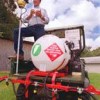 Keeping accurate records of pesticide use makes good sense. In some cases, you are required by law to maintain records on pesticide use, but having records available can also help you improve your operation. This 8-page fact sheet outlines who is required to keep records of pesticide use and the appropriate contents. Written by F. M. Fishel, and published by the UF Department of Agronomy, May 2013.
Keeping accurate records of pesticide use makes good sense. In some cases, you are required by law to maintain records on pesticide use, but having records available can also help you improve your operation. This 8-page fact sheet outlines who is required to keep records of pesticide use and the appropriate contents. Written by F. M. Fishel, and published by the UF Department of Agronomy, May 2013.
http://edis.ifas.ufl.edu/pi246
Landscape Design with Edibles (ENH1214/EP475)
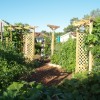 Although design basics for edible ornamental landscapes are essentially the same as strictly ornamental landscapes, a few details ensure the success of the edible landscape. Gardens with plants that change considerably with the seasons rely more on an organized yet interesting layout, appealing support structures, functional pathways, and colorful containers and planters to provide interest and beauty when the plants are not taking center stage. There are twelve important ideas to consider when creating a successful edible ornamental garden. This 4-page fact sheet was written by Gail Hansen, and published by the UF Department of Environmental Horticulture, May 2013.
Although design basics for edible ornamental landscapes are essentially the same as strictly ornamental landscapes, a few details ensure the success of the edible landscape. Gardens with plants that change considerably with the seasons rely more on an organized yet interesting layout, appealing support structures, functional pathways, and colorful containers and planters to provide interest and beauty when the plants are not taking center stage. There are twelve important ideas to consider when creating a successful edible ornamental garden. This 4-page fact sheet was written by Gail Hansen, and published by the UF Department of Environmental Horticulture, May 2013.
http://edis.ifas.ufl.edu/ep475
A Mealybug Phenacoccus multicerarii Granara de Willink (Hemiptera: Pseudococcidae) (EENY550/IN993)
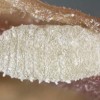 Florida Department of Agriculture and Consumer Services, Division of Plant Industry inspector Lisa Hassell collected the mealybug Phenacoccus multicerarii, a new continental record, from a retail nursery in Fernandina Beach (Nassau County, on 15 June 2011). On a return visit to the store, the mealybug was observed in high numbers on numerous host plants. Three days later, an additional find was made at a nursery in Apopka that had exchanged plant material with the nursery in Jacksonville. No further infestations were reported until October 2012, when a heavy infestation was discovered on a residential planting of coleus in Cooper City (Broward County). This mealybug was described in 2007 from a sample collected in Caracas, Venezuela, in 1949 from an unknown host (Granara de Willink and Szumik 2007). This 2-page fact sheet was written by Ian Stocks, and published by the UF Department of Entomology and Nematology, April 2013.
Florida Department of Agriculture and Consumer Services, Division of Plant Industry inspector Lisa Hassell collected the mealybug Phenacoccus multicerarii, a new continental record, from a retail nursery in Fernandina Beach (Nassau County, on 15 June 2011). On a return visit to the store, the mealybug was observed in high numbers on numerous host plants. Three days later, an additional find was made at a nursery in Apopka that had exchanged plant material with the nursery in Jacksonville. No further infestations were reported until October 2012, when a heavy infestation was discovered on a residential planting of coleus in Cooper City (Broward County). This mealybug was described in 2007 from a sample collected in Caracas, Venezuela, in 1949 from an unknown host (Granara de Willink and Szumik 2007). This 2-page fact sheet was written by Ian Stocks, and published by the UF Department of Entomology and Nematology, April 2013.
http://edis.ifas.ufl.edu/in993
Gardening in Raised Beds (ENH1211/EP472)
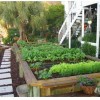 Gardening in raised beds is becoming more popular as more people try growing their own food. Using raised beds is like growing plants in large containers. The planting area is raised above the existing soil level and usually enclosed within a structure to form a planting bed. This 3-page fact sheet was written by Terry Brite DelValle, and published by the UF Department of Environmental Horticulture, May 2013.
Gardening in raised beds is becoming more popular as more people try growing their own food. Using raised beds is like growing plants in large containers. The planting area is raised above the existing soil level and usually enclosed within a structure to form a planting bed. This 3-page fact sheet was written by Terry Brite DelValle, and published by the UF Department of Environmental Horticulture, May 2013.
http://edis.ifas.ufl.edu/ep472
Wildland Weeds: Paragrass, Urochloa mutica (SSAGR370/AG375)
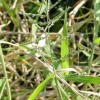 Paragrass (also referred to as Californiagrass) is thought to have been introduced into Florida sometime in the late 1870s as a forage plant. The semiaquatic grass is a native of tropical Africa, and today it is established in both hemispheres in tropical and subtropical regions as a highly palatable fodder. The grass is established in regions of poorly drained soils and along freshwater shorelines in Alabama, Florida, Hawaii, Maryland, Oregon, South Carolina, and Texas. It is an extremely aggressive competitor that can displace many shoreline emergent plants and plants in cultivated or disturbed sites associated with moist soil. Paragrass becomes readily established in wet soils along shorelines where it can form large monocultures. This 4-page fact sheet was written by L. T. Markle, B. A. Sellers, and W. A. Overholt, and published by the UF Department of Agronomy, April 2013.
Paragrass (also referred to as Californiagrass) is thought to have been introduced into Florida sometime in the late 1870s as a forage plant. The semiaquatic grass is a native of tropical Africa, and today it is established in both hemispheres in tropical and subtropical regions as a highly palatable fodder. The grass is established in regions of poorly drained soils and along freshwater shorelines in Alabama, Florida, Hawaii, Maryland, Oregon, South Carolina, and Texas. It is an extremely aggressive competitor that can displace many shoreline emergent plants and plants in cultivated or disturbed sites associated with moist soil. Paragrass becomes readily established in wet soils along shorelines where it can form large monocultures. This 4-page fact sheet was written by L. T. Markle, B. A. Sellers, and W. A. Overholt, and published by the UF Department of Agronomy, April 2013.
http://edis.ifas.ufl.edu/ag375
Florida Foliage House Plant Care: Adenium obesum (ENH1213/EP474)
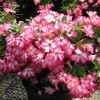 Adenium obesum and its many hybrids are often seen in retail garden centers. They have vibrant floral displays in shades of red, white, pink, and yellow. Flowers average 2–3 inches in diameter and may be single, double, or even triple. The plants must be stationed in high light, 6 hours or more per day, to maintain flowering during the summer. Adenium obesum makes a dramatic specimen for a deck or patio but should be moved indoors in winter. This 2-page fact sheet was written by R. J. Henny and J. Chen, and published by the UF Department of Environmental Horticulture, May 2013.
Adenium obesum and its many hybrids are often seen in retail garden centers. They have vibrant floral displays in shades of red, white, pink, and yellow. Flowers average 2–3 inches in diameter and may be single, double, or even triple. The plants must be stationed in high light, 6 hours or more per day, to maintain flowering during the summer. Adenium obesum makes a dramatic specimen for a deck or patio but should be moved indoors in winter. This 2-page fact sheet was written by R. J. Henny and J. Chen, and published by the UF Department of Environmental Horticulture, May 2013.
http://edis.ifas.ufl.edu/ep474
Sintomas de Cancro Citrico en Arboles de Vivero (PP307)
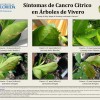 This is a two-page illustrated identification sheet for citrus canker symptoms that appear in citrus nurseries. Written by Timothy D. Riley, Megan M. Dewdney, and Jamie D. Burrow, and published by the UF Department of Plant Pathology, May 2013.
This is a two-page illustrated identification sheet for citrus canker symptoms that appear in citrus nurseries. Written by Timothy D. Riley, Megan M. Dewdney, and Jamie D. Burrow, and published by the UF Department of Plant Pathology, May 2013.
http://edis.ifas.ufl.edu/pp307
Pesticide Options for Insect, Mite, and Mollusk Management in Commercial Strawberry Production in Florida (ENY689/IN486)
 Effective management of arthropod and gastropod pests of strawberry is critical to the profitability of the industry and requires that pests be detected in a timely manner through systematic scouting. Appropriate control measures should be applied as conditions warrant. The tables in this 22-page fact sheet list pesticides that are presently available to commercial strawberry producers in Florida and are organized alphabetically by major pest groups. Written by James F. Price, Curtis Nagle, and Susan E. Webb, and published by the UF Department of Entomology and Nematology, April 2013.
Effective management of arthropod and gastropod pests of strawberry is critical to the profitability of the industry and requires that pests be detected in a timely manner through systematic scouting. Appropriate control measures should be applied as conditions warrant. The tables in this 22-page fact sheet list pesticides that are presently available to commercial strawberry producers in Florida and are organized alphabetically by major pest groups. Written by James F. Price, Curtis Nagle, and Susan E. Webb, and published by the UF Department of Entomology and Nematology, April 2013.
http://edis.ifas.ufl.edu/in486
Cypress looper Anacamptodes pergracilis (Hulst) (Insecta: Lepidoptera: Geometridae) (EENY303/IN986)
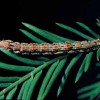 Anacamptodes pergracilis (Hulst), commonly known as the cypress looper, drew considerable attention in late summer of 1980 with the unexpected defoliation of nearly 28,000 ha of cypress trees in USFS-NPS Big Cypress National Preserve (Collier and Monroe counties). Currently, cypress looper populations are at low levels, even in the Fisheating Creek (Glades County) area, a perennial generator of significant cypress looper defoliation over the past 20 years. This 3-page fact sheet was written by Wayne N. Dixon, and published by the UF Department of Entomology and Nematology, April 2013.
Anacamptodes pergracilis (Hulst), commonly known as the cypress looper, drew considerable attention in late summer of 1980 with the unexpected defoliation of nearly 28,000 ha of cypress trees in USFS-NPS Big Cypress National Preserve (Collier and Monroe counties). Currently, cypress looper populations are at low levels, even in the Fisheating Creek (Glades County) area, a perennial generator of significant cypress looper defoliation over the past 20 years. This 3-page fact sheet was written by Wayne N. Dixon, and published by the UF Department of Entomology and Nematology, April 2013.
http://edis.ifas.ufl.edu/in986
Growing Potatoes in the Florida Home Garden (HS993/HS183)
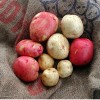 The Irish potato is a cool-season crop. A recently grown and harvested potato exhibits different flavor profiles from one that has been in storage or on a grocery shelf for an extended period. For example, in storage, the starches in potatoes convert to sugars, resulting in a less desirable texture and taste. “New” potato flavor can be achieved in the home garden by following a few growing recommendations. This 9-page fact sheet was written by Christian T. Christensen, Libby R. Rens, Jeffrey E. Pack, Lincoln Zotarelli, Chad Hutchinson, Wendy Dahl, Doug Gergela, and James M. White, and published by the UF Department of Horticultural Sciences, April 2013.
The Irish potato is a cool-season crop. A recently grown and harvested potato exhibits different flavor profiles from one that has been in storage or on a grocery shelf for an extended period. For example, in storage, the starches in potatoes convert to sugars, resulting in a less desirable texture and taste. “New” potato flavor can be achieved in the home garden by following a few growing recommendations. This 9-page fact sheet was written by Christian T. Christensen, Libby R. Rens, Jeffrey E. Pack, Lincoln Zotarelli, Chad Hutchinson, Wendy Dahl, Doug Gergela, and James M. White, and published by the UF Department of Horticultural Sciences, April 2013.
http://edis.ifas.ufl.edu/hs183
Promoting Healthy Relationship Development in Teens, Part II: Three Key Qualities to Foster Better Relationships (FCS2326/FY1364)
 Getting married and staying married require a complicated calculus of factors that must come together to produce healthy and satisfying relationships. While couple interactional processes tend to be the most predictive of whether or not they will stay together and find happiness, background and contextual factors and individual traits also factor heavily into the equation. Finding two socks that match (and don’t wear out) is much more likely to occur when the relationship is based upon a deep and enduring friendship. Asking the question, “Will this choice enhance or diminish my marital friendship?” and then choosing to make the choices that will enhance the marital friendship more often than not are healthy strategies for success. This 5-page fact sheet was written by Victor W. Harris, Gilon Marts, and Muthusami Kumaran, and published by the UF Department of Family Youth and Community Sciences, March 2013.
Getting married and staying married require a complicated calculus of factors that must come together to produce healthy and satisfying relationships. While couple interactional processes tend to be the most predictive of whether or not they will stay together and find happiness, background and contextual factors and individual traits also factor heavily into the equation. Finding two socks that match (and don’t wear out) is much more likely to occur when the relationship is based upon a deep and enduring friendship. Asking the question, “Will this choice enhance or diminish my marital friendship?” and then choosing to make the choices that will enhance the marital friendship more often than not are healthy strategies for success. This 5-page fact sheet was written by Victor W. Harris, Gilon Marts, and Muthusami Kumaran, and published by the UF Department of Family Youth and Community Sciences, March 2013.
http://edis.ifas.ufl.edu/fy1364
Water Quality and the Effectiveness of Pesticides (PI245)
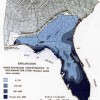 Pesticide applicators do not usually blame the mix for a pest control failure. Rather, the applicator will check if the correct pesticide was chosen for the job, if the pest was misidentified, if application equipment was properly calibrated, or if there was pesticide resistance. However, pesticide applicators should be aware that water quality can play a role in the efficacy of a pesticide treatment. Some pesticides lose their effectiveness when mixed with water that contains suspended or dissolved solids. This publication discusses how water quality affects pesticide mixes. This 2-page fact sheet was written by F. M. Fishel, and published by the UF Department of Agronomy, April 2013.
Pesticide applicators do not usually blame the mix for a pest control failure. Rather, the applicator will check if the correct pesticide was chosen for the job, if the pest was misidentified, if application equipment was properly calibrated, or if there was pesticide resistance. However, pesticide applicators should be aware that water quality can play a role in the efficacy of a pesticide treatment. Some pesticides lose their effectiveness when mixed with water that contains suspended or dissolved solids. This publication discusses how water quality affects pesticide mixes. This 2-page fact sheet was written by F. M. Fishel, and published by the UF Department of Agronomy, April 2013.
http://edis.ifas.ufl.edu/pi245
UF is celebrating Bug Week
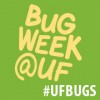 We at University of Florida want to provide you with a beginner-friendly yet science-based look at Florida’s bugs, with emphasis on the species that Florida residents and visitors often encounter. Some are Good Bugs. Some are Bad Bugs. And a whole lot are Bugly Bugs. Follow #UFBugs on Twitter, or vist the website at
We at University of Florida want to provide you with a beginner-friendly yet science-based look at Florida’s bugs, with emphasis on the species that Florida residents and visitors often encounter. Some are Good Bugs. Some are Bad Bugs. And a whole lot are Bugly Bugs. Follow #UFBugs on Twitter, or vist the website at
http://bugs.ufl.edu
Biting midges, no-see-ums Culicoides spp. (Insecta: Diptera: Ceratopogonidae) (EENY349/IN626)
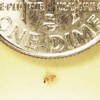 Biting midges can be a nuisance to campers, fishermen, hunters, hikers, gardeners, and others who spend time outdoors during early morning and evenings, and even during the daytime on cloudy days when winds are calm. They will readily bite humans; the bites are irritating, painful, and can cause long-lasting painful lesions for some people. A common observation upon experiencing a bite from this insect is that something is biting, but the person suffering can not see what it is. This 4-page fact sheet was written by C. Roxanne Connelly, and published by the UF Department of Entomology and Nematology, April 2013.
Biting midges can be a nuisance to campers, fishermen, hunters, hikers, gardeners, and others who spend time outdoors during early morning and evenings, and even during the daytime on cloudy days when winds are calm. They will readily bite humans; the bites are irritating, painful, and can cause long-lasting painful lesions for some people. A common observation upon experiencing a bite from this insect is that something is biting, but the person suffering can not see what it is. This 4-page fact sheet was written by C. Roxanne Connelly, and published by the UF Department of Entomology and Nematology, April 2013.
http://edis.ifas.ufl.edu/in626
Cattle Grub Management (ENY290/IN979)
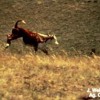 Immature warble flies, or cattle grubs, infest and harm livestock throughout the world. Warble flies also are known as “heel flies” because they cause cattle to kick at themselves, and “gad flies” because they cause cattle to “gad about” in an attempt to evade the flies. Two species of cattle grubs occur in the U.S.A., the common cattle grub, and the northern cattle grub. This 6-page fact sheet was written by P. E. Kaufman and E. N. I. Weeks, and published by the UF Department of Entomology and Nematology, March 2013.
Immature warble flies, or cattle grubs, infest and harm livestock throughout the world. Warble flies also are known as “heel flies” because they cause cattle to kick at themselves, and “gad flies” because they cause cattle to “gad about” in an attempt to evade the flies. Two species of cattle grubs occur in the U.S.A., the common cattle grub, and the northern cattle grub. This 6-page fact sheet was written by P. E. Kaufman and E. N. I. Weeks, and published by the UF Department of Entomology and Nematology, March 2013.
http://edis.ifas.ufl.edu/in979